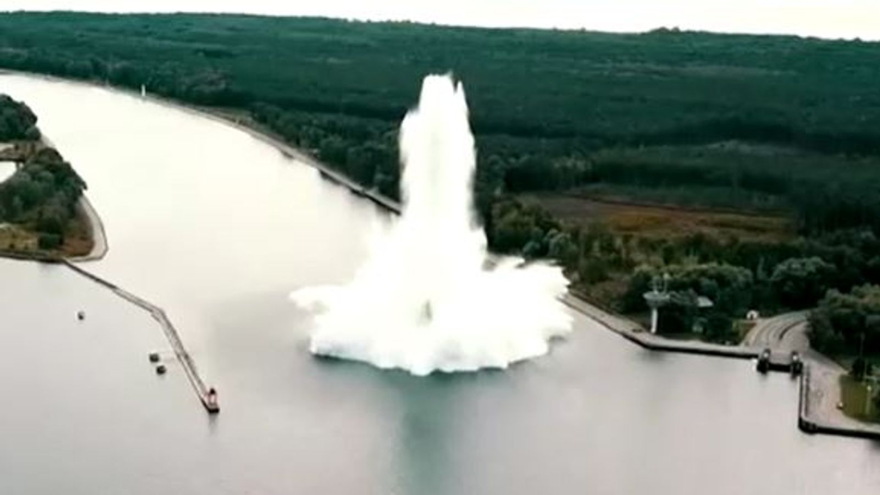 Bomber Command
Bomber Command  |
Aircrew Chronicles
|
Aircrew Losses
|
Nose Art
|
BCATP
|
Lancaster
|
Media
|
Aircrew Chronicles
|
Aircrew Losses
|
Nose Art
|
BCATP
|
Lancaster
|
Media
 Bomber Command
Bomber Command  |
Aircrew Chronicles
|
Aircrew Losses
|
Nose Art
|
BCATP
|
Lancaster
|
Media
|
Aircrew Chronicles
|
Aircrew Losses
|
Nose Art
|
BCATP
|
Lancaster
|
Media
Canadian W/C Johnny Fauquier was the commanding officer of the elite 617 Squadron on 13 April 1945, as he led thirty-four Lancasters from 9 and 617 Squadrons to attack the enemy warships Prinz Eugen and Lutzow in Swinemunde Harbour in northwest Poland on the Baltic coast, almost directly north of Berlin. However, the raid was abandoned because of cloud over the target. The aircraft all returned safely with their 12,000 pound Tallboy bombs after the long flight, Johnny landing after seven hours in the air. Tallboy bombs had been used to sink the German Battleship Tirpitz in November 1944.
Two days later, Johnny led twenty 617 Squadron Lancasters to attack the ships. It was another frustrating day as the raid was abandoned only eighteen miles from the target which was found to be covered by clouds.
The following day, 16 April, the squadron again took off to attack the warships in Swinemunde Harbour. This would be the third attempt to sink the Prinz Eugen and Lutzow. Johnny was concerned that the enemy fighters would be waiting for them to take advantage of the long, straight run-in that the Stabilized Automatic Bomb Sight (SABS) system required. He requested, and was granted, a long-range fighter escort.
However, no enemy fighters appeared as Johnny led the eighteen 617 Squadron aircraft over the harbour, but all but two of the Lancasters were hit by the heavy flak that was encountered. S/Ldr. Powell's bomber received a direct hit. The port wing was torn off and the aircraft spun into the ground near the target. Although one parachute was seen to open at about 2000 feet, all seven crewmembers were killed. This was the last 617 Squadron aircraft lost during the war. The enemy defences still had to be respected even though, as it turned out, the last day of the war was just over two weeks away.
Three Tallboys straddled the Lutzow, one striking between the dock and ship's moored side and blowing a large hole in Lutzow's armour plating below the waterline. She settled to the bottom at her moorings in less than fifty feet of water.
Although it was not known at the time, one of the Tallboys had landed in the shipping channel but did not explode.
For seventy-five years, the bomb lay undiscovered in the harbour until it was spotted by workers dredging the channel. Only its nose was sticking out of the bottom. Polish naval forces used a remote-controlled device to try to 'deflagrate' the bomb -a technique that, if successful, burns the explosive charge without causing a detonation. However, the deflagration process turned into a detonation, throwing up a large column of water into the air.
Fortunately, about 750 residents living nearby had been evacuated and there were no deaths or injuries.
